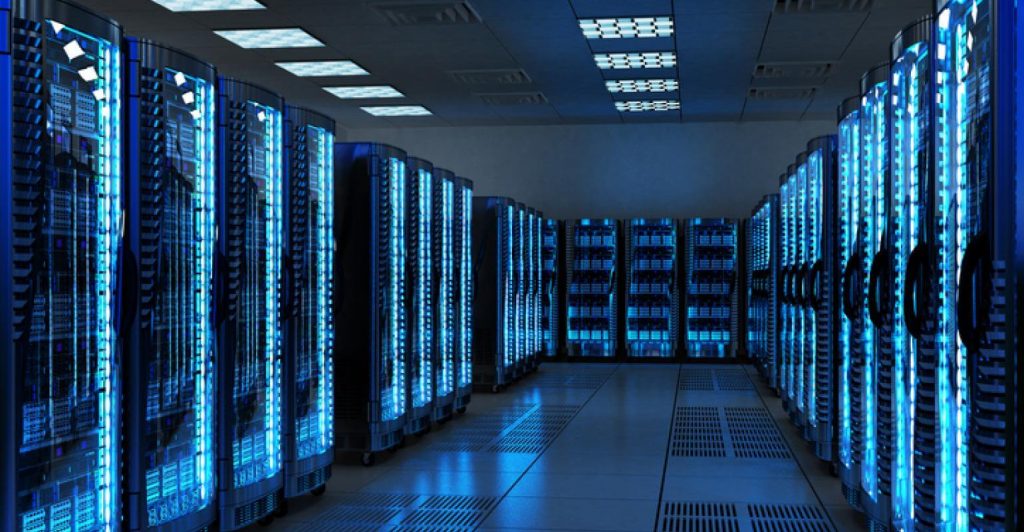A data center is a physical facility at its simplest which is used by companies to house their critical applications and data. The architecture of it is based on a network of computer and storage resources allowing the provision of shared software and information.
What defines a modern data center?
Modern data centers are quite different from the ones they were a short time ago. Network has changed from traditional physical servers at the premises to a virtualized infrastructure that supports applications and workloads through physical infrastructure pools and into a multicloud environment. The modern data center is the location wherever its data and applications are in this age. It reaches to the edge of the network through mobile devices and embedded computing through multiple public and private clouds. It must represent the needs of the users and applications in this constantly changing environment.
Why are data centers important to business?
In the world of enterprise IT, data centers are designed to support business applications and activities that include:
- Email and file sharing
- Productivity applications
- Customer relationship management (CRM) and enterprise resource planning (ERP)
- Big data, artificial intelligence, and machine learning
- Communications and collaboration services
What are the core components of a data center?
The architecture of the data center includes routers, switches, firewalls, storage systems, servers, and controllers for application delivery. Data center security is important in data center architecture, as these components store and handle business-critical data and applications. Together they provide resources for: networks. It links servers to end-user locations (physical and virtualised), data center facilities, storage, and external networking. The facilities for transport. Data is the powerhouse of modern data center. This valuable commodity is kept by storage systems. Ressource computing. Frameworks are Data Center Engines. Such servers provide the application processing, memory, local storage and network connectivity.
How do data centers operate?
Typically, it services are implemented to safeguard the security and integrity of core components of data centres. Safety equipment to the network. These include firewall protection and data center intrusion security. Quality reliability for applications. Such mechanisms provide application resilience and availability through automatic failover and load balancing to maintain application performance.
What is in a data center facility?
Components of the need important infrastructure to support the hardware and software of the centre. These include power subsystems, continuous power supplies (UPS), ventilation systems, cooling systems, fire suppression, backup generators and external network connections.
What are the standards for data center infrastructure?
ANSI / TIA-942 is the most widely adopted standard for building data centers and the infrastructure. This includes ANSI / TIA-942-ready certification standards which ensure compliance with one of the four categories of data center levels rated for redundancy and fault tolerance levels. Tier 1: Basic site infrastructure. A Tier 1 offers limited protection against physical events. It has single-capacity components and a single, nonredundant distribution path. Tier 2: Redundant-capacity component site infrastructure. This offers improved protection against physical events. It has redundant-capacity components and a single, nonredundant distribution path. Tier 3: Concurrently maintainable site infrastructure. This protects against virtually all physical events, providing redundant- capacity components and multiple independent distribution paths. Each component can be removed or replaced without disrupting services to end users. Tier 4: Fault-tolerant site infrastructure. This provides the highest levels of fault tolerance and redundancy. Redundant-capacity components and multiple independent distribution paths enable concurrent maintainability and one fault anywhere in the installation without causing downtime
Types of data centers
There are many different types of data centers and business models. Their classification depends on whether they are operated by one or more companies, how they fit (if they fit) into the topology of other data centers, what processing and storage systems they use, and even their energy efficiencies. There are four main Data Center types:
| Enterprise data centers | These are built, own, and operat by companies and are optimize for their end users. Most often they are house on the corporate campus. |
| Managed services data centers | These data centers are manage by a third party (or a manage services provider) on behalf of a company. The company leases the equipment and infrastructure instead of buying it. |
| Colocation data centers | A business leases space inside it owned by others and situated off company premises in colocation (“colo”) data centres. The colocation data center houses the facilities-building, cooling, bandwidth, security, etc. while the company provides and maintains the components, including servers, storage, and firewalls. |
| Cloud data centers | In this off-premises form of data center, data and applications are host by a cloud services provider such as Amazon Web Services (AWS), Microsoft (Azure), or IBM Cloud. Discover more about data centers and what the future will bring to them and your network. |


